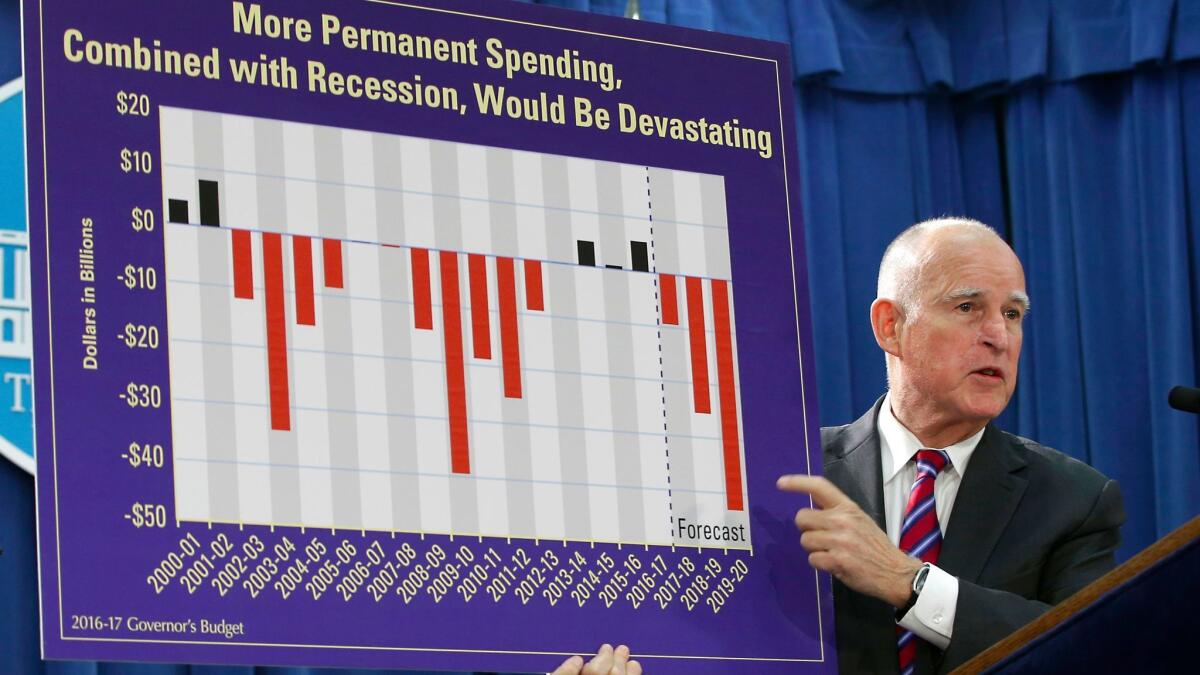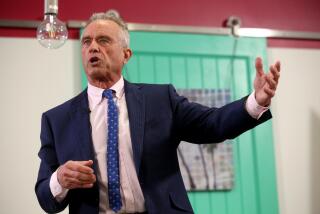Column: Political Road Map: What does the state spend more money on, prisons or schools?

Let’s not beat around the bush. There are an awful lot of Californians who don’t know where the state government spends most of their hard-earned tax dollars.
It’s a problem that’s been going on for years.
For more than a decade, poll takers for the nonpartisan Public Policy Institute of California have asked the following question: “I’m going to name some of the largest areas for state spending. Please tell me the one that represents the most spending in the state budget.”
In the institute’s latest survey, released last week, the result was the same it has been every time since 2005: Many Californians think prisons get the most money. Thirty-nine percent picked that answer in the new poll.
Only 16% got the right answer: K-12 education. That means more than 8 of every 10 adults surveyed don’t know a fundamental fact about California’s budget.
“We really start with a basic disconnect,” said Mark Baldassare, the institute’s president and survey director.
The math, by the way, isn’t even close. In Gov. Jerry Brown’s budget proposal that was unveiled last month, almost 43 cents of every dollar in the state’s general fund would be spent on K-12 schools. Prisons, on the other hand, would get only 9 cents of that dollar. Health care and higher education are both bigger slices of the pie than prisons.
Political Road Map: California voters have placed a lot of budget choices on autopilot »
That schools get the largest share of the money is thanks to voters, who approved a 1988 funding mandate that drives almost every other spending decision made by legislators in Sacramento.
And Californians like being in the driver’s seat. The institute’s researchers often ask whether voters want the tough budget decisions to be made at the state Capitol or the ballot box. The last time they asked in January 2015, 78% of those surveyed said leave it to us.
In short: Voters want the power to craft state budgets, but don’t know the basics of how those budgets are put together.
We really start with a basic disconnect.
— Mark Baldassare of the Public Policy Institute of California on polling that shows state residents mistakenly think prisons, not schools, are the state’s biggest budget item
Baldassare thinks it’s part of a political skepticism that runs deep in the California electorate.
“I think it reflects their underlying beliefs that the government is somehow not able to find its way to spending money on what’s most important,” he said.
And perhaps, Baldassare noted, there’s a similar skepticism about leaving things to Washington. Californians have often supported going their own way on climate change, for example. Even on immigration, a historically federal issue that’s a lightning rod in the wake of President Trump’s plans, last week’s poll from the institute found that 65% of those surveyed think state and local leaders should make their own policies.
But back to the budget, the lack of basic information shows how tough it is for lawmakers and the news media to explain the complex choices facing California.
The budget, financed in large part by the fortunes of the wealthy, may be tilting back into deficit territory. One in three Californians receives free health care through the Medi-Cal system. Transportation projects have stalled for a lack of funds. And rising annual payments to cover long-term public employee pension obligations could force additional pressure on vital services delivered by state and local governments.
Interest groups that place budget-related measures on the statewide ballot may promise their proposals — from taxes to spending mandates — will only help California in years to come. But without a better understanding of the fundamentals, voters could make the state fiscally weaker, not stronger.
“It really indicates how difficult it is for a state like California that relies on voters to make decisions,” Baldassare said.
Follow @johnmyers on Twitter, sign up for our daily Essential Politics newsletter and listen to the weekly California Politics Podcast
ALSO:
Political Road Map: School spending will rise in 2017, so why are some districts prepping for cuts?
Political Road Map: The long, cold winter for California’s pension funds is coming
Updates on California politics and government
More to Read
Get the L.A. Times Politics newsletter
Deeply reported insights into legislation, politics and policy from Sacramento, Washington and beyond. In your inbox three times per week.
You may occasionally receive promotional content from the Los Angeles Times.











